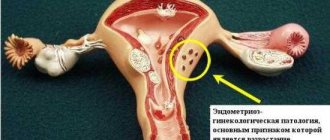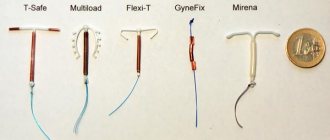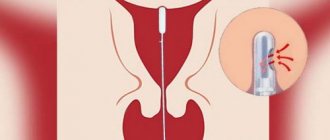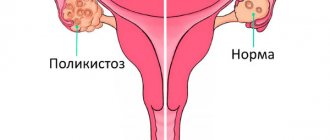Physical examinations and ultrasounds can help identify endometriosis, but laparoscopy is the only way to definitively diagnose the disease.
Endometriosis is a pathology that occurs when the tissue lining the uterus grows into other tissues, creating lesions.
Tissue growth can cause severe pain, discomfort, bleeding and swelling.
Endometriosis lesions are difficult or often impossible to detect using non-invasive imaging techniques such as ultrasound, so doctors must perform laparoscopy to make an accurate diagnosis.
Laparoscopy for endometriosis involves making small incisions in the abdomen and inserting a tiny camera that allows you to see inside the abdomen, look for endometriosis lesions and remove them with surgical instruments, if possible.
In this article, you will learn more about laparoscopy for endometriosis and what to expect before, during, and after your laparoscopy procedure.
Symptoms of endometriosis for which laparoscopy is prescribed
Symptoms of endometriosis for which laparoscopy is usually indicated include:
- vaginal bleeding;
- infertility;
- pain during intercourse;
- chronic pelvic pain;
- urinary problems;
- pain during bowel movements.
Laparoscopy for endometriosis is performed to confirm the diagnosis of endometriosis, but this procedure also allows the surgeon to remove some of the lesions, which reduces unpleasant symptoms.
Although there is no cure for endometriosis, laparoscopy is usually a definitive diagnosis and is an effective treatment for some people.
What is endometriosis
Endometriosis is a pathological proliferation of endometrial tissue. Tissues can be found in various parts of the reproductive system and beyond. Damage to the peritoneum, bladder and intestines is often diagnosed. Symptoms largely depend on the location of the lesions.
A distinctive feature of this pathology is that the symptoms actively appear in the period before the onset of menstrual bleeding. The mechanism of pain is associated with the maturation of the endometrium and the process of its rejection.
Attention! Endometriosis is a common cause of various menstrual irregularities, cysts, and infertility.
The danger of the disease is difficult to overestimate; it is quite common. Gynecologists identify it as one of the three most frequently diagnosed processes, along with uterine fibroids. Most often, the disease is detected in women of reproductive age, in the period from 25 to 40 years, but there are cases of detection of endometrioid lesions in girls after menarche (first menstruation). The risk of developing pathology during menopause is minimal, no more than 2%.
The danger of the disease lies in its latent course at the initial stage. In the early stages of development, endometriosis responds well to conservative treatment. As it develops, hormonal correction loses its effectiveness, and symptoms appear with greater intensity.
In what cases is laparoscopy not performed?
Doctors usually do not recommend laparoscopy when a person first reports symptoms of endometriosis because, although the incisions are small, laparoscopy is an invasive procedure and carries some risks.
Typically, doctors try to diagnose pathology by performing other, non-invasive procedures. For example, ultrasound is used to diagnose ovarian cysts or fibroids, which can also cause pelvic pain.
Sometimes endometriosis is diagnosed using transvaginal ultrasound.
Sometimes hormonal medications, such as birth control pills or gonadotropin-releasing hormone agonists, are prescribed without a definitive diagnosis of endometriosis. Patients with endometriosis often notice that their symptoms improve while taking these medications.
However, endometriosis can continue to cause symptoms even with hormonal treatment.
Not everyone is a candidate for hormone treatment. For example, some people cannot take medications that contain estrogen because it may increase the risk of stroke.
Indications and contraindications
Indications
- ineffectiveness of drug therapy;
- prolonged bleeding and intense pain;
- damage to other organs;
- the presence of combined pathologies (fibroids, ovarian tumor, cervical pathology);
Contraindications
- infection or inflammatory process in the body;
- severe concomitant diseases in the stage of decompensation;
- some blood pathologies;
- the presence of a malignant process in the terminal stage.
How to prepare for laparoscopy for endometriosis
The surgeon will often give the woman specific instructions on how to prepare for surgery. These may include:
- have someone pick up the patient from the hospital and stay with the patient for 24 hours;
- refrain from eating or drinking for only a few hours;
- stopping smoking in the days or weeks preceding surgery;
- Avoid taking certain medications on the day of surgery if your doctor recommends it.
Sometimes your doctor will recommend using a special soap in the shower or cleaning wipes the night before or on the day of surgery to help prevent infections.
You should not shower or swim for 48 hours after surgery, so you should shower before going to the hospital.
Doctors also prescribe medications to help with bowel movements. Bowel prep is an unpleasant part of preparing for surgery, but it helps the doctor safely remove damage caused by endometriosis from the gastrointestinal tract.
How is the operation performed?
A catheter is placed in the vein, which the anesthesiologist will use later to administer anesthesia.
Surgeons perform laparoscopy using general anesthesia. The anesthesiologist will provide medications and monitor vital signs throughout the procedure.
Laparoscopy for endometriosis proceeds as follows. The surgeon will make small incisions on the abdomen, including near the belly button, to minimize scarring.
The surgeon then inserts an instrument that allows the abdominal cavity to be filled with carbon dioxide gas. Inflating the abdominal cavity with gas helps the surgeon see the pelvic organs.
The doctor can then make further incisions and insert instruments as needed to identify possible areas of endometriosis and remove samples for biopsy or treatment.
After surgery, surgeons remove the instruments and close the incisions with either stitches, staples, or glue. Then a bandage is applied.
After what period can pregnancy occur?
Most women have a natural question regarding planning the long-awaited conception. The gynecologist cannot give a definite answer to this. How long it will take to plan the onset of this period depends on the characteristics of the woman’s body, the surgical intervention, and the course of the recovery process.
If laparoscopy was performed to remove adhesions, then conception may occur no earlier than after 3–4 months. This time is required in order for the patency of the pipes to be restored and the swelling of the tissues to subside. If you conceive earlier, there is a greater likelihood of developing an ectopic pregnancy.
If a woman has had an endometriotic cyst removed, then her body requires a longer rest. Typically, experts recommend pregnancy no earlier than 6 months later. However, there are cases when after 3 months a long-awaited pregnancy occurred, which ended in the birth of a healthy baby. When performing laparoscopy to treat uterine fibroids, rest from the reproductive functions of the body is required for at least six months.
The expected pregnancy after treatment for polycystic ovary syndrome is possible after 1 month. When undergoing surgery for an ectopic pregnancy, the body will need at least six months to regain strength. This has a connection with the disturbed hormonal balance resulting from termination of pregnancy. If laparoscopy was performed to cauterize inflammation with removal of adhesions, then conception may occur after 3 months.
Important! Often, treatment of endometriosis after laparoscopy requires the prescription of hormonal drugs; in this case, pregnancy planning must be postponed until the therapeutic course is completed.
Recovery after laparoscopy
Laparoscopy for endometriosis requires some recovery time. Typically, the patient goes home after the surgery is completed, especially if it is just a diagnostic procedure.
However, there are some cases where you may need to spend an overnight stay in the hospital, for example if the endometriosis was extensive and the surgeon took a long time to remove all the damage.
Your doctor may prescribe painkillers for your surgery. Rest and avoiding excess stress on the abdomen may also help.
Avoid heavy lifting for the first few weeks after surgery to reduce the chances of a hernia.
Recovery time after laparoscopy varies, but if there are no complications, most patients can return to their normal activities within a week.
The first time after undergoing a laparoscopy procedure may be more difficult and painful than usual. If necessary, take time to rest and prepare additional painkillers and hygiene products in advance.
Recovery Tips
There are many ways to help you recover faster after laparoscopy. These include:
- Comfortable delivery home and care in the first days after laparoscopy.
- Placing a pillow or sweater between the seat belt and the abdomen to reduce pressure on the wounds during the ride home.
- During transport, the patient may vomit, so it is better to have a container with you in this case.
- Drink peppermint tea to relieve stomach pain due to the presence of gas. The gas can cause pain in the abdomen and shoulder and can take up to several weeks to leave the cavity.
- Taking quiet walks in the first days after the procedure will help get rid of gas in the abdominal cavity faster.
- Sanitary pads can help manage vaginal bleeding caused by laparoscopy. You should not use tampons or insert anything into your vagina during the recovery period.
- Recover as long as possible, do not go to work or study, trying to do this at home.
After laparoscopy, a woman may be emotional, cry, or feel weak.
It is important to take steps slowly after laparoscopy for endometriosis to ensure a complete recovery.
When does the menstrual cycle return?
Many women are interested in when their periods come after laparoscopy. For a large number of women, there are no changes in the menstrual cycle. This has a connection with the intervention being carried out at a specific time. However, in some cases the cycle changes. Doctors identify several options for norms. The first is a shift in the menstrual cycle by 3-4 days. Doctors consider laparoscopic intervention to be the beginning of the cycle, based on this, menstrual flow comes after the usual period.
Secondly, menstrual flow becomes mucous in nature and lasts about 2 weeks. Third, a delay in menstruation can occur due to the effects of anesthesia or stress.
If the delay is more than 3 weeks, and the woman is bothered by pain and discharge from clots, then it is necessary to consult a doctor as soon as possible, since these symptoms often occur when the ovaries are damaged during the intervention.
It is important not to panic when experiencing menstrual irregularities. It is necessary to pay attention to the nature of the discharge and its abundance. If there are even slight suspicions, then you should not postpone a visit to the gynecologist.
Risks and complications of surgery
Any invasive surgery carries certain risks. The doctor should discuss them with the patient before the procedure begins.
One of the most serious potential side effects of laparoscopy for endometriosis is damage to the intestines, especially if there is damage to the area caused by endometriosis.
Other possible complications of laparoscopy for endometriosis:
- bladder injuries;
- pelvic infection;
- relapse of endometriosis;
- scarring;
- damage to blood vessels.
Reviews
Let's look at a few reviews about laparoscopy for endometriosis.
Marina, 29 years old
I suffered for a long time, not understanding where the pain and bleeding came from, and could not get pregnant. Doctors could not make an accurate diagnosis. A few years later I came across a qualified doctor who prescribed laparoscopy. After the operation, a diagnosis was made and the damaged areas were immediately removed, and a course of hormonal medications was prescribed. I took them for 4 months, and three months after finishing the course, the long-awaited pregnancy occurred. I am very glad that I finally solved this problem and am grateful to my doctor.
Anna, 34 years old
I couldn’t get pregnant for a long time; endometriosis was suspected, so a laparoscopy was prescribed. The surgeon performed the operation successfully. I became pregnant only a year and a half after the operation, but considering that I am over 30, I am very happy with this result.
Laparoscopy for endometriosis is usually an effective diagnostic and therapeutic procedure that reduces the symptoms of the pathology and can cure the disease, as well as enable pregnancy.
Doctor's comment
The drug therapy prescribed to you for endometriosis did not bring the desired result, and the recommended surgery raises concerns? In our clinic, preference is always given to low-traumatic techniques. When excising endometriosis, we use laparoscopic access, thanks to which pain and blood loss are excluded. Moreover, after recovery, marks on the skin of the abdomen are almost invisible, because all manipulations are performed through a couple of punctures that do not require sutures. Of course, the extent of surgical intervention can be determined after an examination, which can also be performed in our clinic. We have all the necessary expert-class equipment, thanks to which we can determine the degree of damage to internal organs and prescribe adequate treatment, taking into account the characteristics of your body. Moreover, if you are planning to have a child in the future, you have every chance of motherhood. Therefore, make an appointment without delay, and together we will discuss all the nuances of the upcoming treatment!
Head of the surgical service at SwissClinic Konstantin Viktorovich Puchkov










